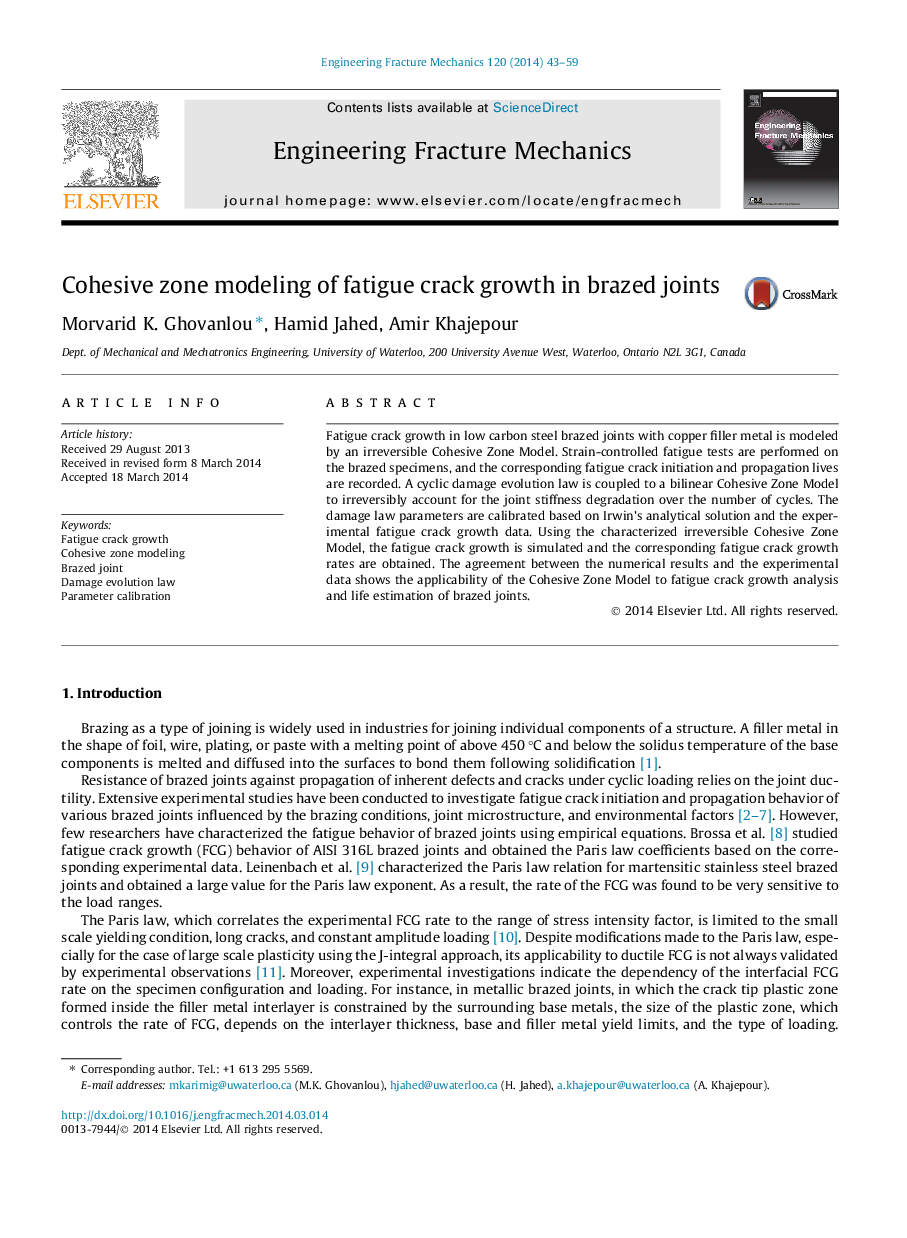| Article ID | Journal | Published Year | Pages | File Type |
|---|---|---|---|---|
| 770332 | Engineering Fracture Mechanics | 2014 | 17 Pages |
•Interdendritic fatigue striations reveal the brazed joint failure mechanism.•The damage parameters are calibrated using Irwin’s solution and the experimental data.•The fatigue crack growth is simulated and the crack growth rates are obtained.•Fatigue crack growth life of the brazed joints is well estimated by the CZM.•The CZM approach shows applicability to fatigue analysis of brazed joints.
Fatigue crack growth in low carbon steel brazed joints with copper filler metal is modeled by an irreversible Cohesive Zone Model. Strain-controlled fatigue tests are performed on the brazed specimens, and the corresponding fatigue crack initiation and propagation lives are recorded. A cyclic damage evolution law is coupled to a bilinear Cohesive Zone Model to irreversibly account for the joint stiffness degradation over the number of cycles. The damage law parameters are calibrated based on Irwin’s analytical solution and the experimental fatigue crack growth data. Using the characterized irreversible Cohesive Zone Model, the fatigue crack growth is simulated and the corresponding fatigue crack growth rates are obtained. The agreement between the numerical results and the experimental data shows the applicability of the Cohesive Zone Model to fatigue crack growth analysis and life estimation of brazed joints.
